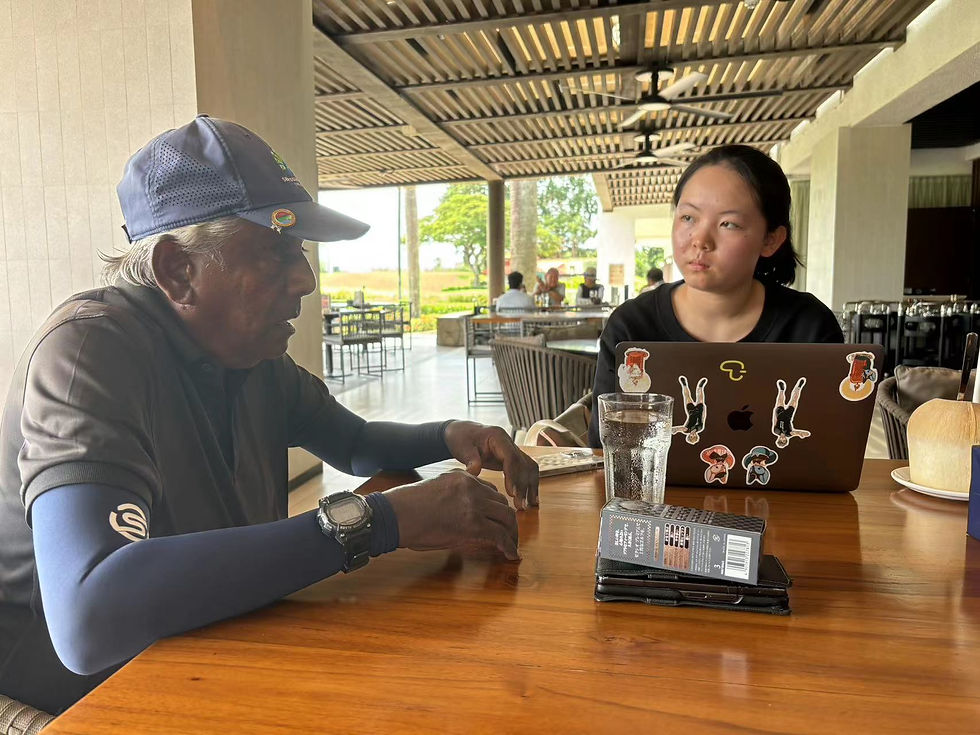Roots of Reciprocity:A Reflection on Braiding Sweetgrass by Robin Wall Kimmerer
- Roshni Shah
- Sep 18
- 3 min read
“The marriage of alga and fungus, Umbilicaria is the child of earth, life nourished by stone” (Robin Wall Kimmerer).
Umbilicaria, as Robin Wall Kimmerer describes, is a lichen that survives in the harshest conditions, sustained only by the symbiotic bond - the marriage - between algae and fungus. This tiny organism serves as a powerful metaphor for the central themes of the novel: reciprocity and the interconnectedness of all life. Through the lessons of Umbilicaria, we learn that the natural world can only thrive on mutual relationships, a cycle of give-and-take. While the alga produces sugar for the fungus through photosynthesis, the fungus retains minerals that allow the alga to survive. I was surprised at how such a simple organism could represent such a profound truth: we cannot survive alone, and neither can the planet. Kimmerer encourages us to embrace this ideal, learning to live in harmony with the environment rather than at its expense.
Kimmerer, a botanist who specializes in plant ecology, blends Indigenous knowledge with scientific research, challenging the conventional expectations of her field. As someone who thought science was always about objectivity and distance, I found it refreshing – even comforting – to read about a scientist who speaks from the heart. Instead of treating nature as an object to be studied, she sees it as a relationship to be honored. Kimmerer gives voice to the idea that plants, animals, even stones are not “its” but “beings.” When she asks, “What do you suppose would happen if people believed this crazy notion that the earth loved them back?” I paused. The quote that followed – “You wouldn’t harm what gives you love” – felt like a quiet truth that I had known all along but never named. It changed how I walk outside, how I listen to trees, how I feel about the ground beneath my feet. This idea encapsulates her central message: if humans recognized the Earth as a loving giving being, they would treat it with care and respect. Therefore, environmental destruction is a betrayal of a relationship - a symbiotic partnership that, like the unbreakable bond between alga and fungus, must be nurtured to thrive.
Kimmerer redefines the idea of a gift. She writes, “But what if those very same socks, red and gray striped, were knitted by my grandmother and given to me as a gift? That changes everything. A gift creates ongoing relationship.” This made me realize how disconnected we often are from the origins of what we consume. Her point – that when we see nature’s offerings as gifts rather than products, we naturally respond with gratitude and care – hit home. It reminded me to say thank you, even silently, when picking a flower or eating a fruit. I now think of the Thanksgiving Address, a daily expression of gratitude to all the beings that sustain life: the waters, the animals, the plants the winds. I couldn’t help but wonder how our culture would shift if children began each school day with thanks to the Earth instead of the Pledge of Allegiance. Gratitude, Kimmerer demonstrates, isn’t just good manners – it’s a way of living.
Sweetgrass is more than a plant - it is a lesson, a teacher, and a thread that ties together the core values of the novel. It represents the human connection with the natural world. Contrary to the expectations of many in her scientific field, Kimmerer reveals that sweetgrass flourishes when harvested. It benefits from a respectful relationship with humans. To me, this was one of the most hopeful takeaways: that healing the planet doesn’t mean removing ourselves from it. In fact, it might mean leaning in, tending, and participating in the care of land with respect and reciprocity.
In the end, Braiding Sweetgrass is a call to reimagine our place within the natural world. It invites us to slow down, to listen deeply, and to act with care. Reading it made me feel more grounded, as if I’d been gifted a new lens through which to see the world. I’ll carry its lessons with me, always reminded that just as the Earth gives so generously, we too have gifts to offer in return.




Comments